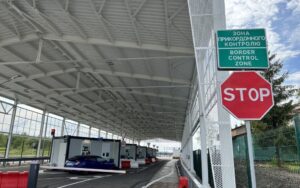
Passenger traffic across the Ukrainian border in the sixth week of spring, from April 5 to 11, with the end of school holidays, remained at the level of the previous week – 488 thousand, while the net inflow decreased from 40 thousand to 22 thousand, according to the State Border Guard Service on Facebook.
According to the data, the flow of entry decreased by 3.4% – from 264 thousand to 255 thousand, while the flow of exit increased by 4% – from 224 thousand to 233 thousand.
The number of vehicles crossing the checkpoints this week increased from 122,000 to 127,000, while the flow of vehicles carrying humanitarian aid decreased from 546 to 625.
According to the State Border Guard Service, as of 12:00 on Saturday, the queue to leave the border with Poland was only at the Ustyluh checkpoint – 20 cars, on the border with Slovakia at the Uzhhorod and Maly Berezny checkpoints – 25 and 10 cars, respectively, while on the border with Hungary at the Tisa and Vylok checkpoints – 15 and 10 cars, respectively.
The total number of people crossing the border this week in 2025 is slightly higher than last year’s: 238 thousand people left Ukraine and 234 thousand entered during the same seven days, with a traffic flow of 116 thousand. But last year, Easter was celebrated on March 31 (Western rite) and May 5 (Eastern rite), while this year the celebration falls on one day – April 20, and an increase in passenger traffic is expected.
As reported, on May 10, 2022, the outflow of refugees from Ukraine, which began with the outbreak of war, was replaced by an influx that lasted until September 23, 2022 and amounted to 409 thousand people. However, since the end of September, possibly under the influence of news about mobilization in Russia and “pseudo-referendums” in the occupied territories, and then massive shelling of energy infrastructure, the number of people leaving has been exceeding the number of people entering. In total, from the end of September 2022 to the first anniversary of the full-scale war, it reached 223 thousand people.
In the second year of the full-scale war, the number of border crossings to leave Ukraine, according to the State Border Guard Service, exceeded the number of crossings to enter by 25 thousand, while in the third year – by 187 thousand, and since the beginning of the fourth year, a small net inflow of 3 thousand has been recorded.
As Deputy Economy Minister Serhiy Sobolev noted in early March 2023, the return of every 100,000 Ukrainians home results in a 0.5% increase in GDP.
In its January inflation report, the National Bank estimated the outflow from Ukraine in 2024 at 0.5 million (0.315 million according to the State Border Guard Service). In absolute terms, the number of migrants staying abroad will increase to 6.8 million in 2024. The NBU also maintained its outflow forecast for 2025 at 0.2 million.
According to updated data from the UNHCR, the number of Ukrainian refugees in Europe as of March 20, 2025, was estimated at 6.373 million, and 6.933 million worldwide, which is 26 thousand more than as of February 19.
In Ukraine itself, according to the latest UN data, 3.665 million internally displaced persons (IDPs), including approximately 160 thousand people, were displaced from the frontline areas in the east and south between May and October 2024 due to the intensification of hostilities.
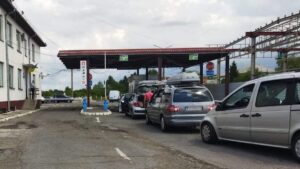
Passenger traffic across the Ukrainian border in the first week of spring, from March 1 to March 7, increased by 1.1% compared to the previous week, to 440 thousand, due to an increase in the number of people entering Ukraine.
According to the State Border Guard Service’s Facebook page, the number of exit crossings decreased from 225,000 to 222,000, while the number of entry crossings increased from 210,000 to 218,000.
The number of vehicles that crossed the checkpoints remained at 117 thousand, while the flow of vehicles with humanitarian cargo increased from 553 to 621, so the ban on the “Shlyakh” system for volunteers has not yet affected the statistics.
According to the State Border Guard Service, as of 9:00 a.m. on Sunday, there were small queues at the Uzhhorod checkpoint (15 vehicles) on the border with Slovakia, at the Ustyluh checkpoint (15 vehicles) on the border with Poland, and at the Luzhanka (20 vehicles), Vylok (10 vehicles), and Tisa (6 vehicles) checkpoints on the border with Hungary.
The total number of people crossing the border this week in 2025 is slightly higher than last year’s: 215 thousand people left and 210 thousand entered Ukraine in the same seven days, with a traffic flow of 110 thousand. Last year, passenger traffic remained at this level for another week before increasing during the spring school holidays.
As reported, on May 10, 2022, the outflow of refugees from Ukraine, which began with the outbreak of war, was replaced by an influx that lasted until September 23, 2022 and amounted to 409 thousand people. However, since the end of September, possibly under the influence of news about mobilization in Russia and “pseudo-referendums” in the occupied territories, and then massive shelling of energy infrastructure, the number of people leaving has been exceeding the number of people entering. In total, from the end of September 2022 to the first anniversary of the full-scale war, it reached 223 thousand people.
In the second year of the full-scale war, the number of border crossings to leave Ukraine, according to the State Border Guard Service, exceeded the number of crossings to enter by 25 thousand, while in the third year – by 187 thousand, and since the beginning of the fourth year – by another 21 thousand.
As Deputy Economy Minister Serhiy Sobolev noted in early March 2023, the return of every 100,000 Ukrainians home results in a 0.5% increase in GDP.
In its January inflation report, the National Bank estimated the outflow from Ukraine in 2024 at 0.5 million (0.315 million according to the State Border Guard Service). In absolute terms, the number of migrants staying abroad will increase to 6.8 million in 2024. The NBU also maintained its outflow forecast for 2025 at 0.2 million.
According to updated UNHCR data, the number of Ukrainian refugees in Europe as of February 19, 2025, was estimated at 6.346 million, and 6.907 million worldwide, which is 43 thousand more than as of January 16.
In Ukraine itself, according to the latest UN data, 3.665 million internally displaced persons (IDPs), including approximately 160 thousand people, were displaced from the frontline areas in the east and south between May and October 2024 due to the intensification of hostilities.
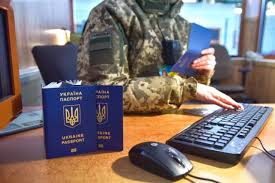
Passenger traffic across the Ukrainian border in the week of December 21-27 increased by another 12.5% compared to the previous week, to 657,000, primarily due to a sharp increase on the weekend before Christmas, when it reached 133-136,000 people per day.
According to the State Border Guard Service’s Facebook page, the number of outbound crossings increased from 294,000 to 325,000, while the number of inbound crossings increased from 290,000 to 332,000.
At the same time, the number of vehicles crossing the checkpoints decreased from 134 thousand to 117 thousand over the week, while the flow of vehicles with humanitarian cargo decreased from 633 to 471.
“We would like to draw the attention of citizens crossing the border at Krakovets, Uhryniv and Rava-Ruska checkpoints. There is a certain accumulation of vehicles leaving Ukraine,” the State Border Guard Service said on Sunday.
On the border with Poland, as of 18:00, there were queues at the checkpoints Krakovets (80 cars), Ustyluh (65), Uhryniv (30) and Rava-Ruska (10).
On the border with Hungary, the longest queue is at Tisa checkpoint – 15 cars, while Luzhanka has 10, Kosyno and Vylok – 5 cars each.
At the Maly Berezny checkpoint on the border with Slovakia, 25 cars have accumulated, while at the Uzhhorod checkpoint, 6 buses have accumulated.
The total number of people crossing the border in the fourth week of winter this year is higher than last year’s: 280 thousand people left Ukraine and 302 thousand entered during the same seven days, with a traffic of 110 thousand cars.
Last year, passenger traffic decreased by 3.6% during this week, while the following week it dropped by another 18.4%.
As reported, on May 10, 2022, the outflow of refugees from Ukraine, which began with the outbreak of war, was replaced by an influx that lasted until September 23, 2022 and amounted to 409 thousand people. However, since the end of September, possibly under the influence of news about mobilization in Russia and “pseudo-referendums” in the occupied territories, and then massive shelling of energy infrastructure, the number of people leaving has been exceeding the number of people entering. It temporarily stopped in the second half of December and early January during the holidays, but then resumed again and reached a total of 223 thousand people from the end of September 2022 to the first anniversary of the full-scale war.
During the second year of the full-scale war, the number of border crossings to leave Ukraine, according to the State Border Guard Service, exceeded the number of crossings to enter by 25 thousand, while since the beginning of the third year, the number of crossings has increased by another 191 thousand.
As Deputy Economy Minister Serhiy Sobolev noted in early March last year, the return of every 100,000 Ukrainians home results in a 0.5% increase in GDP. In its macroeconomic forecast for this year, the Ministry of Economy has included 1.5 million people returning to Ukraine.
At the same time, the National Bank, in its October inflation report, again downgraded its forecast for the outflow from Ukraine this year from 0.4 million to 0.5 million. In absolute terms, the number of migrants staying abroad is expected to increase to 6.8 million this year.
According to updated UNHCR data, the number of Ukrainian refugees in Europe was estimated at 6.254 million as of December 16 this year, and 6.814 million in the world in general, which is 28 thousand more than as of November 18 this year.
In Ukraine, according to the latest UN data as of August this year, there were 3.669 million internally displaced persons (IDPs), which is 121 thousand more than in April this year.
According to regional authorities cited by the UN, more than 128,000 people have left Donetsk region in eastern Ukraine since August 1, including 24,000 who fled active hostilities, while approximately 330,000 remain in the region, including approximately 63,000 in active combat zones.
In Sumy region, the authorities estimate that 36,000 people, including 6,000 children, were evacuated between August 1 and October 3.
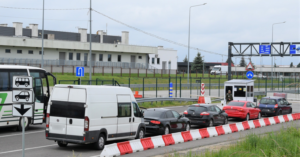
Passenger traffic across Ukraine’s border increased by 3.7% year-on-year to 452,000 passengers in the first week of winter (November 30-December 6) as the Christmas holidays approached.
According to the State Border Guard Service’s Facebook page, the number of outbound crossings increased from 222,000 to 229,000, while the number of inbound crossings increased from 214,000 to 223,000.
As for their distribution by day of the week, according to the border guards, traditionally, the maximum flow of exit traffic was on Friday-Sunday, while the maximum flow of entry traffic was on Saturday-Monday.
The number of vehicles crossing the checkpoints increased from 118,000 to 122,000 over the week, while the flow of vehicles carrying humanitarian aid slightly decreased from 577 to 565.
The State Border Guard Service indicates that as of 12:00 Sunday, a small queue was observed at only one checkpoint: “Ustyluh” on the border with Poland – 10 cars, while at all other checkpoints there were no queues.
The total number of people crossing the border in the first week of winter this year is higher than last year’s: 206 thousand people left Ukraine and 209 thousand entered during the same seven days, with a traffic flow of 108 thousand cars.
As reported, on May 10, 2022, the outflow of refugees from Ukraine, which began with the outbreak of war, was replaced by an influx that lasted until September 23, 2022 and amounted to 409 thousand people. However, since the end of September, possibly under the influence of news about mobilization in Russia and “pseudo-referendums” in the occupied territories, and then massive shelling of energy infrastructure, the number of people leaving has been exceeding the number of people entering. It temporarily stopped in the second half of December and early January during the holidays, but then resumed again and reached a total of 223 thousand people from the end of September 2022 to the first anniversary of the full-scale war.
During the second year of the full-scale war, the number of border crossings to leave Ukraine, according to the State Border Guard Service, exceeded the number of crossings to enter by 25 thousand, while since the beginning of the third year, the number of crossings to enter has increased by another 184 thousand.
As Deputy Economy Minister Serhiy Sobolev noted in early March last year, the return of every 100,000 Ukrainians home results in a 0.5% increase in GDP. In its macroeconomic forecast for this year, the Ministry of Economy has included 1.5 million people returning to Ukraine.
At the same time, the National Bank, in its October inflation report, again downgraded its forecast for the outflow from Ukraine this year from 0.4 million to 0.5 million. In absolute terms, the number of migrants staying abroad this year is expected to increase to 6.8 million.
According to updated UNHCR data, the number of Ukrainian refugees in Europe was estimated at 6.226 million as of November 18, and 6.786 million worldwide, which is 34 thousand more than as of October 15.
In Ukraine itself, according to the latest UN data as of August this year, there were 3.669 million internally displaced persons (IDPs), which is 121 thousand more than in April this year.
According to regional authorities cited by the UN, more than 128,000 people have left Donetsk region in eastern Ukraine since August 1, including 24,000 who fled active hostilities, while approximately 330,000 remain in the region, including approximately 63,000 in active combat zones.
In Sumy region, the authorities estimate that 36,000 people, including 6,000 children, were evacuated between August 1 and October 3.

Vehicle traffic through the Ustyluh-Zosyn checkpoint on the Ukrainian-Polish border has been fully resumed.
Due to a malfunction of the Polish Border Guard Service’s networks, the passage of vehicles through the Ustyluh-Zosyn checkpoint was temporarily suspended, and later the clearance was carried out in a slow mode.
Currently, the networks and databases of the neighboring party have been fully restored, so the clearance is carried out in a normal mode.
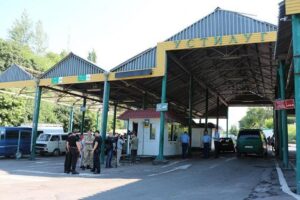
On the border with Poland, at the Ustyluh-Zosin checkpoint, the passage of persons and vehicles is temporarily suspended due to a malfunction of the database on the Polish side, the State Border Guard Service of Ukraine reports.
“At night, the Border Guard of the Republic of Poland reported a malfunction in the database. In this regard, registration and passage is not carried out,” the State Border Guard Service said in a statement on Telegram.
The State Border Guard Service informs that measures are currently being taken to eliminate the malfunction.
“We ask citizens and carriers, if possible, to choose other checkpoints to cross the border,” it concludes.